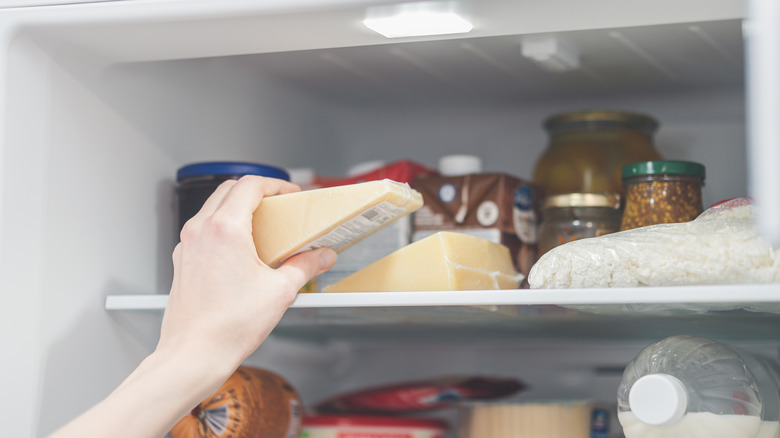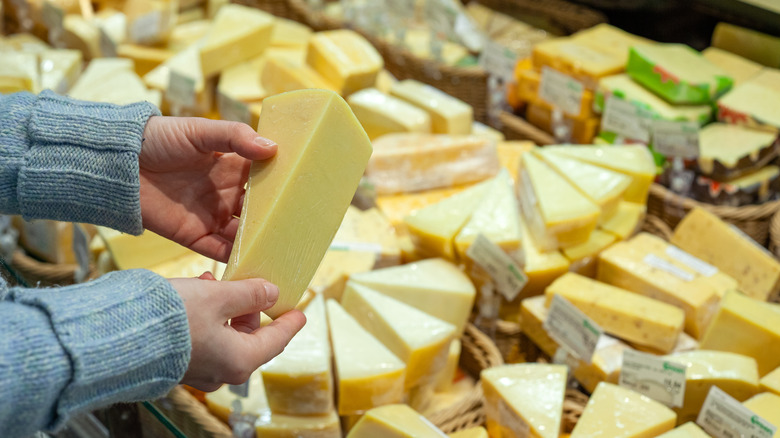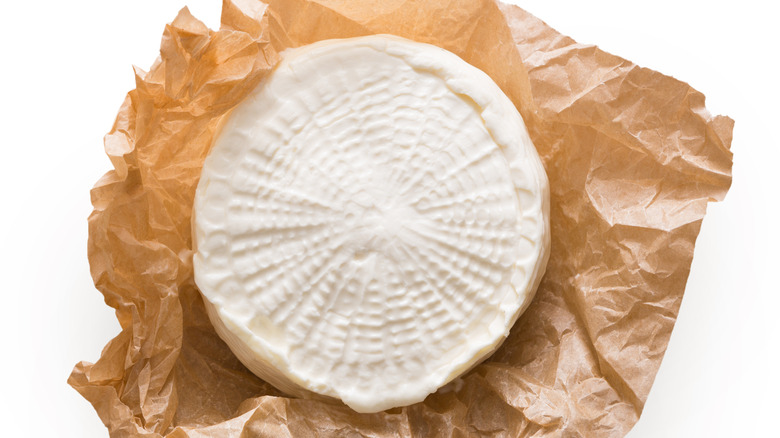There Is A Wrong Place In The Fridge To Store Your Cheese
Between planning a list, filling the grocery cart, checking out, and getting all the bags of food back home, the last thing you probably want to do is put all the groceries away. This is why many refrigerators are packed haphazardly, with no rhyme or reason. But your food shopping isn't done once you swipe your card at the checkout. If you use a little strategy to stock your refrigerator, it will not only look tidy, but you'll also always know where things are and when you run out, and you'll keep your perishable food as fresh as possible. After all, what's the sense in clipping coupons and scouring the sales fliers if you end up throwing things away? Especially when it comes to expensive products like cheese.
Modern refrigerators are fancier than ever and can do all kinds of things, like make spherical ice and filter out ethylene, according to USA Today, but even the most basic model refrigerator has certain compartments and temperature settings you can use to preserve your precious cheeses. You might think that the best place for that pricey piece of Balkan donkey milk cheese (the most expensive variety in the world) belongs in the deli drawer, but it's better off in the vegetable drawer.
Colder isn't better
The optimal temperature for every refrigerator is below 40 F and above freezing (32 F); some areas are warmer and colder. The top shelf, for example, is warmer because the heat rises in the fridge, just like in your house, and the door is warmer because it's exposed to outside air every time it's opened. The bottom shelf near the back of the fridge, where the air settles, is the coldest, and the middle is the most consistent temperature, where the deli drawer usually lives. This drawer is excellent for deli meats and sliced sandwich cheeses because they need that cool, consistent temperature to prevent spoiling.
Good, artisanal cheese, however, should be kept where there's higher humidity and controlled slightly warmer temperatures. This is why the vegetable drawer is ideal. These drawers are designed to stay cool, have consistent temperatures, and are usually equipped with humidity control settings to control the airflow in the drawer, according to Martha Stewart, which keeps produce fresh as long as possible without freezing it. These same conditions are great for fancy cheeses, especially semi soft varieties like brie and camembert. Cheesemonger Carol Johnson told Food & Wine that the warmer temperatures allow the ripening process to continue while the humidity keeps the cheese nice and moist.
Protect your investment
Even if you store your cheese in the right place in the refrigerator, you also need to wrap it properly. Don't be tempted to store your cheese without wrapping it up first because the crisper drawer is more humid. It still needs a barrier from the airflow inside the refrigerator, which is pushed around by a fan and can increase evaporation on the surface of the cheese, leaving it dry and crusty.
If you buy most of your cheese at the grocery store, it's easy to assume that it's ok to store it wrapped in plastic since that's how it's packaged. But plastic wrap can trap ammonia, a natural byproduct of the good bacteria in the cheese. Over time, the ammonia flavor will build up in your wrapped cheese, and that will be all you can taste. Plastic wrap is the easiest, most hygienic way to package cheese for sale, but when you get home, you should peel it off and replace it with either a piece of cheese paper or a section of parchment paper, which will let the cheese breathe and release that ammonia. Wrap it loosely with your paper, using a rubber band or a binder clip to keep it secure, stash it in the drawer with your veggies and you'll have a happy block of cheese for your next snack.


